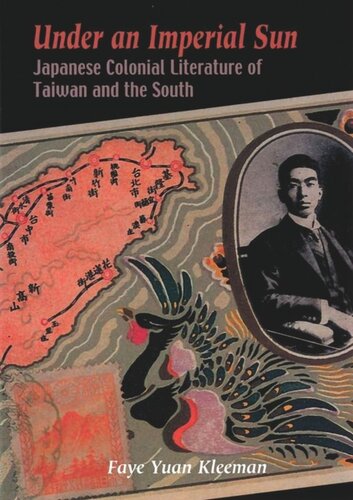

Most ebook files are in PDF format, so you can easily read them using various software such as Foxit Reader or directly on the Google Chrome browser.
Some ebook files are released by publishers in other formats such as .awz, .mobi, .epub, .fb2, etc. You may need to install specific software to read these formats on mobile/PC, such as Calibre.
Please read the tutorial at this link: https://ebookbell.com/faq
We offer FREE conversion to the popular formats you request; however, this may take some time. Therefore, right after payment, please email us, and we will try to provide the service as quickly as possible.
For some exceptional file formats or broken links (if any), please refrain from opening any disputes. Instead, email us first, and we will try to assist within a maximum of 6 hours.
EbookBell Team

4.0
6 reviewsUnder an Imperial Sun examines literary, linguistic, and cultural representations of Japan's colonial South (nanpô). Building on the most recent scholarship from Japan, Taiwan, and the West, it takes a cross-cultural, multidisciplinary, comparative approach that considers the views of both colonizer and colonized as expressed in travel accounts and popular writing as well as scholarly treatments of the area's cultures and customs.
Readers are introduced to the work of Japanese writers Hayashi Fumiko and Nakajima Atsushi, who spent time in the colonial South, and expatriate Nishikawa Mitsuru, who was raised and educated in Taiwan and tried to capture the essence of Taiwanese culture in his fictional and ethnographic writing. The effects of colonial language policy on the multilingual environment of Taiwan are discussed, as well as the role of language as a tool of imperialism and as a vehicle through which Japan's southern subjects expressed their identity--one that bridged Taiwanese and Japanese views of self.
Struggling with these often conflicting views, Taiwanese authors, including the Nativists Yang Kui and Lü Heruo and Imperial Subject writers Zhou Jinpo and Chen Huoquan, expressed personal and societal differences in their writing. This volume looks closely at their lives and works and considers the reception of this literature--the Japanese language literature of Japan's colonies--both in Japan and in the former colonies. Finally, it asks: What do these works tell us about the specific example of cultural hybridity that arose in Japanese-occupied Taiwan and what relevance does this have to the global phenomenon of cultural hybridity viewed through a postcolonial lens?